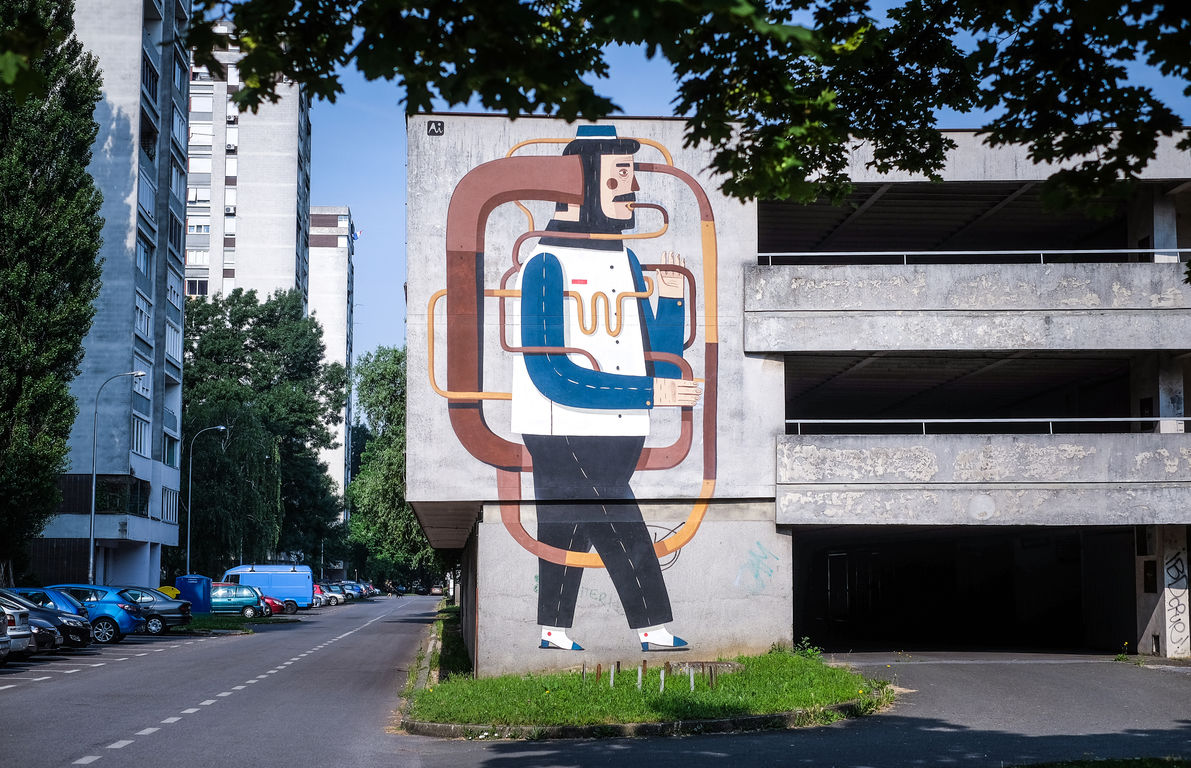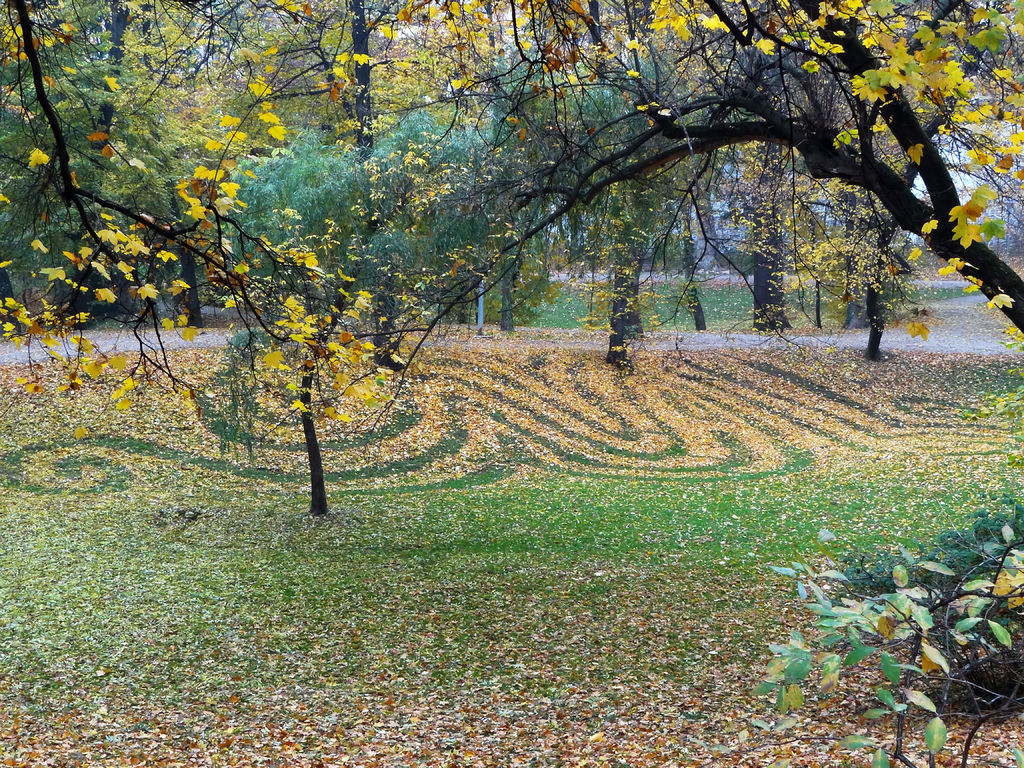No Fish in Zagreb’s Fishpond
You might suddenly imagine an island in place of the Siget's skyscrapers. Siget is one of the neighborhoods. Its name comes from a Hungarian word for an island. In the past, when river Sava was still roaming free and often flooded the area, this part of the land indeed often emerged as an island. Another densely populated part of town called Dubrava replaced an ancient oak forest, just like its name says.
 A deserted island instead of this neighborhood? Hard to imagine, isn’t it? Photo by S. Kaštelan
A deserted island instead of this neighborhood? Hard to imagine, isn’t it? Photo by S. Kaštelan
Pastures sprinkled with wild cherries instead of the famous Zagreb neighborhood of Trešnjevka - what an image! Trešnja is a cherry. I wonder how did the wine from Vinogradska - vineyard street taste? My favorite 'agricultural' placename is the quarter called Šalata. It is a rather elite neighborhood. However, doesn’t its name sound a bit like salad? Well, that is precisely what it means! In the past, this area was full of vegetable gardens.
Animal-related names also give you a hint about the bygone ages. Don’t worry, they have nothing to do with the present day. No bears have been found on mount Medvednica (medved is a bear) since Middle Ages. In fact, some believe the mountain carries its name after prehistoric bears. With that in mind, it could be called the Lions mountain, just as well. Cave bears, cave lions, cave bats, and all sorts of prehistoric mammals were discovered in the Veternica (windy) cave. Bears got the most recognition, though. How do you call a medieval fortress on mount Medvednica? Medvedgrad, of course. Some translate this as bear-town, but that just sounds so cartoonish, doesn’t it?
 No bears in Medvedgrad fortress or on mount Medvednica. Photo by M. Vrdoljak
No bears in Medvedgrad fortress or on mount Medvednica. Photo by M. Vrdoljak
There is also the park Ribnjak, which literally means fishpond. It’s a beautiful park in the city center, beneath the medieval walls and the Zagreb cathedral. You might notice the uneven terrain of the park, with many swales. Who could even imagine that the swales are remains of actual fishponds that were securing delicious dinner on the tables of Zagreb bishops in the past?
 No fish in Zagreb’s fishpond (Ribnjak). Photo by Boška i Krešo
No fish in Zagreb’s fishpond (Ribnjak). Photo by Boška i Krešo
Do fish and bears in Zagreb form a strange image in your mind? Then what do you say about dragons? Yes, there is a tiny hidden area called Zmajevac (zmaj is a dragon). I really don’t know where does the name come from. In fact, if anyone who reads this knows, please share. My lucky guess is that the old dragon legends got caught in the name. There are indeed some placenames that share the folktales of old. For example, the Manduševac fountain is supposedly named after a young woman called Manda from a local legend about the origin of the city name. There is a lovely location in the woods above Zagreb called Kraljičin zdenac (Queen’s Well). It owes its name to the notorious Black Queen. The Black Queen from bear-town Medvedgrad is a mythical creature. She terrorized the whole area, according to the old lore. A great drought left all the peasants without any water once. In despair, they went for help from the feared Black Queen because her fortress was the only place with water. Ruthless as only she was, she shut the gate of her fortress and sent them away. The cruel act brought a big curse on her. Her own water well suddenly dried out. At the same time, on their way back, the peasants found a new spring of water that miraculously appeared out of nowhere. They called it the Queen’s Well as a memory of her cruelty and the miraculous spring of hope that emerged right there in the woods in front of them.
 The clue to the history of Tkalčićeva street is in its side streets. Photo by J. Duval
The clue to the history of Tkalčićeva street is in its side streets. Photo by J. Duval
A curious example of the long-gone history captured in placenames is the famous Tkalčićeva street. The street name is not especially interesting in this context, as it was named after a historical personality. But all of the side streets are giving away hints about its history.
For Kožarska ulica (tannery street) and Mlinarske stube (millers stairs) to even exist, there must be a strong water stream around here. The water is nowhere to be found. However, there really used to be a creek that flowed through nowadays Tkalčićeva. It was redirected and channeled back in 1899 and has slowly disappeared from our memories since. If it wasn’t for the placenames around the street, we wouldn’t have any proof about its existence in the past. Finally, one of the strangest place names in the town is right next to Tkalčićeva Street. In its two words, a small street remembers the creek. It also tells us something about the neighborly relations between the two medieval villages of Zagreb. The name of the small street is Krvavi most, the bloody bridge. There’s no bridge anymore, there’s no river, no fishponds, no bears... The names are still here. The stubborn placenames are living proofs and storytellers of Zagreb’s long and peculiar history.
Header image credit: Julien Duval
Author: Iva Silla
